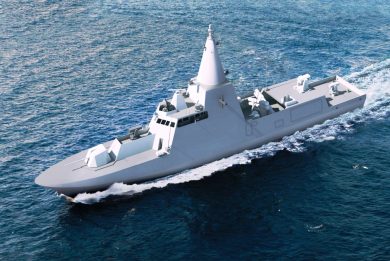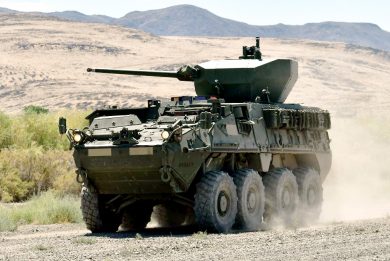
Army announces contract awards for OMFV
Washington, June 26, 2023– The U.S. Army announced today the award of two firm-fixed price contracts for the Optionally Manned Fighting Vehicle Phase III and IV Detailed Design and Prototype Build and Testing phases, using full and open competitive procedures. The contracts were awarded to General Dynamics Land Systems Inc. (Sterling Heights, Michigan) and American Rheinmetall Vehicles LLC (Sterling Heights, Michigan). The total award value for both contracts is approximately $1.6 billion.
With the initial digital design phase of the program now complete, the Army is redesignating the OMFV program as the XM30 Mechanized Infantry Combat Vehicle.
“The XM30 program has been highly successful,” said Maj. Gen. Glenn Dean, the Army’s Program Executive Officer for Ground Combat Systems. “The Army’s iterative concepting and digital design approach, combined with increased emphasis on competition, continues to allow the program to quickly design a transformational capability for the Army of 2030 and beyond.”
The XM30, which will replace Bradley Fighting Vehicles, will bring new capabilities that will transform the way our formations fight in the future. Developed with a modular open system architecture, the XM30 will allow new, developing technology to be added to the vehicle as that technology matures, ensuring overmatch against any future adversary.
“Competition remains a vital aspect of the XM30 program,” said Doug Bush, Assistant Secretary of the Army for Acquisition, Logistics and Technology. “Fully funding two companies for the next phases of the program will allow the Army to place the XM30 on a rock-solid foundation from a resourcing perspective, while also maintaining a competitive environment.”
Bush emphasized how the XM30 program opened the door for industry partners that are not traditional U.S. combat vehicle prime contractors, allowing for increased competition and innovation in the program.
“A sign of the success of this strategy is that we are increasing innovation through greater industry competition from those that are not traditional U.S. combat vehicle prime contractors, which is evidence of both the robust capability that exists in worldwide industry and the Army’s willingness to embrace new ideas,” said Bush.
“Modernization is a central element of Army transformation, which provides capability and lethality for our Soldiers,” said Gen. James Rainey, commanding general of Army Futures Command. “The nature of our adversaries’ actions and intent, amid rapid and disruptive technological change, demands that the Army continue to transform. Milestones like today’s announcement for XM30 demonstrate we are on a sustainable path to equip today’s Soldiers with modern equipment while we invest in the technologies and systems necessary to build the Army of 2030.”
The XM30 combines transformative improvements in lethality, vehicle and Soldier survivability, and upgradability that are beyond the physical and economic limits of the Army’s Bradley Fighting Vehicle.
“The XM30 brings a transformational change to how our armored brigade combat teams will fight in the future, bringing more lethality to the battlefield and reducing risk for our Soldiers,” said Brig. Gen. Geoffrey Norman, director of the Next-Generation Combat Vehicles Cross Functional Team.
The XM30 will deliver improved capabilities through the use of 21st century technologies that will be developed using a digital acquisition environment.
During the next two phases of the program, the Army will conduct activities to mature XM30 designs and will verify prototype performance during test activities, including a limited user test. The awardees will be required to deliver up to 11 prototype vehicles, as well as two ballistic hulls and turrets, armor coupons and digital engineering data.
Following the detailed design and prototype build and testing phases, the Army intends to have a limited competition to downselect to one vendor at Milestone C near the end of fiscal year 2027, with first unit equipped anticipated in fiscal year 2029.
“These same vendors will then compete, based on demonstrated platform performance, in a limited competition for XM30 low-rate initial production,” said Dean.
The Army continues to drive a process that will bring today’s most advanced technology into the XM30 and, through the use of digital engineering and a modular open system architecture, the XM30 team will be able to rapidly integrate future technologies.
File photo courtesy US Army


